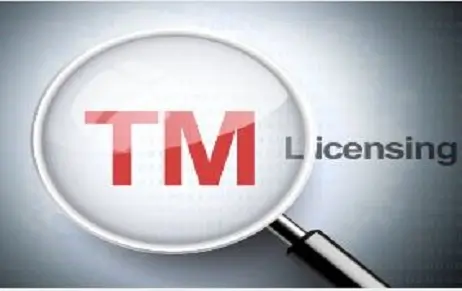Introduction An intellectual property right is an intangible right. It is uncontested that the “brand”…
Steering Towards Success, The Bishop’s Way
IP (Patent) Licensing and Commercialization Case Study: Bishop Steering
Intellectual Property can be understood as creations of the mind such as inventions, expressions in the form of literary, artistic or other works of expression, symbols, names and images, etc. used in commerce. It can further be divided into Industrial Property or Copyright.[1] Patent as a part of Industrial Property, is an exclusive right granted for an invention – a product or process that provides a new way of doing something, or that offers a new technical solution to a problem[2].
According to 7 USCS § 178a, the term “commercialization” means “the stage in the development or advancement of a technology at which point private enterprise is willing to invest in a full-scale production facility”[3]. Even though the definition is derived from US Agriculture Laws, the still be applied constructively and harmoniously with the intellectual property laws under question.
The most common means to attain commercialisation of an asset after sale is either by an assignment or a license. An analogy between a real property and an intellectual property can be drawn for both licensing and agreement. An assignment is “An assignment is a transfer or setting over of property, or of some right or interest therein, from one person to another denoting not only the act of transfer, but also the instrument by which it is effected[4].” This implies that there will be a complete transfer of ownership which may not be favourable. License, on the other hand, is defined under Black’s Law dictionary as “A permission, usually revocable, to commit some act that would otherwise be unlawful[5].” Licence of an Intellectual property can be compared with lease of a real property as ownership rights can be retained while granting the other remaining rights. A license provides the owner a better control over the asset as compares to an assignment.
Intellectual property is useful only when it is suitably exploited in the form of commercialisation by means of licensing. In order to elaborate the impact of licencing of an intellectual property asset, a patent in particular, it is worth mentioning the seminal case of Bishop Steering.
Dr Arthur E. Bishop having both the engineering ingenuity to design breakthrough automotive systems as well as the requisite leadership skills to attract and inspire highly-specialised designers and engineers started what eventually became Bishop Steering Technology Pty Ltd. (Bishop) way back in 1957[6]. He adapted technology originally developed for power-steering systems for World War II aircraft for use in automobiles[7]. And in 2011 became a subsidiary of the German company GMH Stahlverarbeitung GmbH and continued operating under the name Bishop Steering Technology Pty Ltd[8].
One of the earliest patents that had been granted to Bishop Steering was in 1958 for perfection over rack – and – pinion power steering technology. Since then it had been an uphill trajectory as over the years Bishop Steering has filed for more than 500 patents, out of which more than 100 have been successfully registered[9].This generated at its peak almost around 7 million USD by means of royalties, out of which more than 90% are from oversees licensees.
But instead of venturing into materialise it into manufactured product and realising its sale thereafter, the company followed the strategy to go for licensing its patents and other intellectual property assets to other car and car component manufacturing companies, mostly small and medium enterprises and investing the revenue generated in further R&D purposes. The company has a dedicated protection policy regarding its intellectual property and defends it vigorously and prosecutes any infringer[10].
Its strategy to generate revenue and bring its products and related developments to market is actually quite simple, to first create an IP following its licensing[11]. This strategy proved to be favourable after Bishop steering secured its first license from a major Japanese automobile manufacturing firm[12]. Throughout the company’s history, it has strategically used licensing to grow its business, taking full advantage of such business partnerships and adapting contracts to suit the prevailing business environment. From starting with exclusive licenses to licensees, with time, is has positioned itself in the market in such a fashion that it was then able to negotiate for non – exclusive licenses and enter into joint ventures, thereby increasing its sources of income.At one point in time, almost a quarter of motor vehicles produced every year incorporated Bishop technology[13].
Bishop Steering Technology Inc. (Indianapolis/USA) along with Bishop Steering Technology GmbH (Cologne/Germany) were acquired by GMH Stahlverarbeitung GmbH, a subsidiary of Georgsmarienhütte Holding GmbH on 15 January 2011 and till this day belong to the Steering Systems business unit of the internationally-oriented GMH Gruppe. The success story of this company still stands strong today as it inspires numerous enterprises to consider and follow a similar business strategy of creation, protection and licensing of patents and other intellectual property with the aid, advice and counselling of expert patent attorneys.
Author: Madhur Tulsiani , Intern at Khurana&Khurana, Advocates and IP Attorneys. In case of any queries please contact/write back to us at [email protected].
References:
[2] (ibid).
[3]https://www.gpo.gov/fdsys/pkg/USCODE-2011-title7/pdf/USCODE-2011-title7-chap8A-subchapII-sec178a.pdf
[4]http://www.republicsg.info/Dictionaries/2004_Black%27s-Law-Dictionary-Edition-8.pdf
[5] (ibid).
[6]https://www.bishopsteering.com.au/de-en/about-us/history/
[7]http://www.wipo.int/ipadvantage/en/details.jsp?id=4739
[8] (ibid).
[9](ibid).
[10]http://www.wipo.int/edocs/mdocs/sme/en/wipo_reg_ip_guz_02/wipo_reg_ip_guz_02_8_b-related1.pdf
[11]http://www.wipo.int/ipadvantage/en/articles/article_0112.html
[12]http://www.wipo.int/ipadvantage/en/articles/article_0112.html
[13] (ibid).

